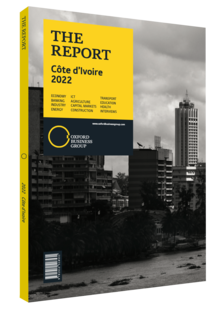Roland Ouedraogo, General Director, Sanlam Assurance Côte d’Ivoire: Interview

Interview: Roland Ouedraogo
Where do you envision opportunities to expand the insurance penetration rate?
OUEDRAOGO: The penetration rate – or more simply the share of insurance premium to GDP – is still considerably low in Côte d’Ivoire. It amounted to 1.1% in 2020 according to estimates by Atlas Magazine, compared to around 3% for the continent the same year. Real opportunities exist and must be exploited for this to improve. These include the penetration of mobile phones and mobile payments, a young population hungry for digital consumption and the dynamism of Côte d’Ivoire’s economy, which has shown sustained growth of around 8% over the past decade.
Three factors can increase the insurance penetration rate. First, improvements in the claims experience of policyholders and victims of traffic accidents can lead to greater insurance penetration. A second area is innovation to attract consumers through simple, accessible and transparent products. Finally, additional lines of compulsory insurance to cover certain liabilities can increase demand and penetration.
Which sectors do you see as drivers of growth for the domestic insurance market?
OUEDRAOGO: After modest growth in 2020 due to the Covid-19 pandemic, the insurance market picked up again in 2021, according to figures provided by the Association of Insurance Companies of Côte d’Ivoire. Expansion was led by property insurance – excluding motor – which saw growth of 21% over the year, followed by life insurance (13%) and health insurance (8%). We saw that infrastructure, industry and service projects have had an impact on insurance premium.
Despite more cars on the road, the auto segment grew by a relatively low 5%. Competition cutting prices does not alone explain this. Fraud and the non-insured auto segment remain prevalent issues in the market.
Insurers must be able to support the country’s growth, and offer traditional and new insurance products. However, fundamentally growth must come from the industry offering to the general public products that are accessible to all citizens.
In which areas do you see increased potential for investment in technology and the use of data to improve the products and services on offer?
OUEDRAOGO: The pandemic had a strong impact on all sectors, including insurance. Digitisation is no longer an option, but a strategic imperative. These developments have been accompanied by issues related to information and transaction security, or cyber-risk, and consequently by new needs in terms of insurance coverage. Improving data-led products can allow us to calibrate more tailor-made offers adapted to the real needs of customers. The digitisation of our value chain can have considerable impact from onboarding to the payment of claims, including contracting and scheduled or occasional interactions. Moreover, data allows for the automation of routine tasks and integration with our partners to be even more efficient.
To what extent can closer collaboration with the regulator be achieved?
OUEDRAOGO: Regulators have undertaken great efforts to better supervise insurers, and guarantee respect for the interests of policyholders and victims. However, not all issues have been addressed related to the digitalisation of processes, for example in the acceptance of electronic signatures and receipts. We know that related initiatives are in the pipeline and that regulators are open to experimentation that will help support the development of a digital ecosystem.
Furthermore, compulsory coverage should be extended, but in return for quality services from insurers. It is important for insurance companies to develop self-regulation capacities so that they are able to collectively increase their quality standards in order to sustain the trust of the whole population.
You have reached the limit of premium articles you can view for free.
Choose from the options below to purchase print or digital editions of our Reports. You can also purchase a website subscription giving you unlimited access to all of our Reports online for 12 months.
If you have already purchased this Report or have a website subscription, please login to continue.

